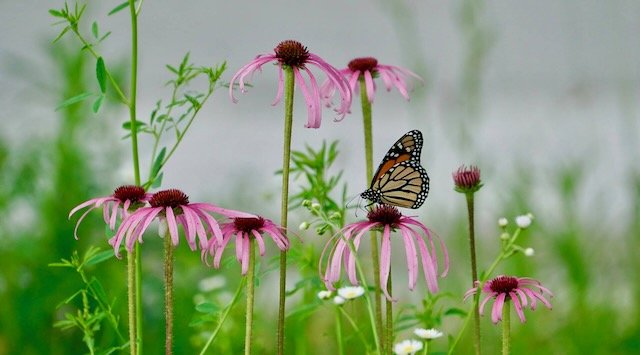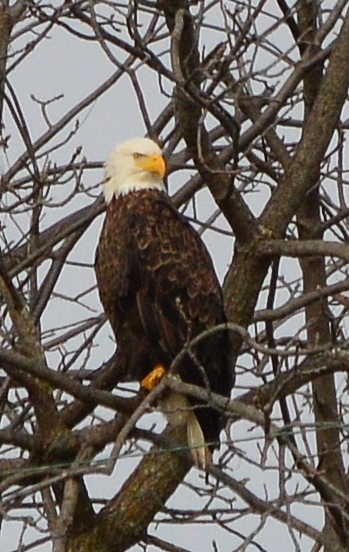Have you ever heard of a Timberdoodle Skydance?
Trees in Winter by Katharine Spigarelli
I love trees. Call me a “tree hugger” and I’ll take it as a compliment. It’s a label I wear proudly. So, tree watching is a pastime that occupies my time as I walk, drive, or just sit in the backyard. What might be surprising to many people is that one of my favorite times of year to “watch” trees is winter. I know, you’re thinking “What?!!!” When most people think of trees in winter, they think of drab, gray, and unpleasing.
When asked which season has the most beautiful trees, most people would probably respond that autumn trees are their favorite. It’s hard not to love trees in autumn. Their colors are beautiful and warm and are the subject of artwork and photography. I love trees in autumn. In springtime, seeing the buds emerge on trees and the freshness of the newly formed leaves is always exciting. We all love the beautiful greens of spring trees and the blossoms on dogwoods, redbuds, and other flowering trees that come with the warming temperatures of spring. I love trees in spring.
In summer, we are thankful for the shade of trees that provides us relief from the heat and reprieve from the blazing sun. The coolness of a tree lined hiking path or a shady backyard are wonderful gifts in summertime. I love trees in summer.
But, what, you ask, do winter trees have to offer? Winter trees allow you to see their potential. For me, one of the things I enjoy most when driving is looking at trees. You can see their trunks and limbs. It’s interesting to see the forms they have. I sometimes look at them and think of how they are like people. Some are long and slender. You can imagine them modeling hiking clothes. They look like they must always be on the go, never sitting around being lazy. Some are full and squatty and seem to be vertically challenged. They offer great protection for our friends, the birds.
When you look more closely, you can often find nests that are not visible in the other seasons. Some trees appear to be perfect, just like some people. They spread their limbs both vertically and horizontally and seem to have everything you could want for a tree in your yard. Their strong limbs look ready for the treehouse or the swing and their perfect shape makes you visualize them in the front yard of any home. Some trees seem to have had a tough life, but aren’t quite ready to give it up. Some of their limbs may be gone, some are barely hanging on. Other trees seem to have let themselves go and their branches kind of stick out randomly. They show the effects of age with sagging and straggling limbs. They make me smile as I enter that stage of life.
Trees in winter allow us to better enjoy the beauty of a sunrise or sunset. Seeing the colors of the sky through leafless branches enhances our enjoyment of the experience. There are few things more beautiful than a winter sunset glowing through a group of trees.
I love trees in winter because they reveal hidden treasures. Have you ever passed by a place in winter and all of a sudden you notice an old barn, homestead, tree stand, or some other mystery that you’ve never before noticed? It’s pretty exciting to find something that’s been hidden by the leaves of trees and is now revealed.
I love trees in all the seasons. But, as much as I love them all, I think I most love trees in winter. They offer a certain peacefulness and welcome contemplation and meditation. So, as you take your next long drive, put down your phone, look around, and notice the shapes, the strength, and the groupings. Enjoy
A Happy Ending With a Touch of Class By Jeff Cantrell
Field notes and photographs by J. Cantrell
I was ten and participated on my first guided hike and it just so happened to be in amazing Yellowstone. My folks are national park enthusiasts and my mom’s mission this trip was to grant her young conservationist the gift of a rare wildlife experience.
When we think of wildlife, endangered species stories frequently emerge and they have a gloom and doom undertone to them. Biologists strategize on how to reverse the decline of the population while the nature-loving communities offer support any way they can contribute. So unfortunately when the subject regarding threatened species comes up we are prepared for a grim outcome.
The trumpeter swan is the largest of North American waterfowl and surely one of the most stunning. The trumpeters to me simply symbolize all that is graceful and stylish in nature. A swimming swan resembles an ice skater’s refined glide and their reflection appears to pursue the bird on a blue or silver mirror. The adults are a crisp bright white, while the juvenile’s plumage matches the winter sky. They are a true conservation success story recovering from brutal market hunting for their skin, feathers and meat. Quill feathered pens were a favorite instrument of John James Audubon to tailor the groundwork sketches for his celebrated bird paintings. The swan feathers inflated pillows and mattresses for the aristocrats and colonists to rest well and dream of the promises of a fresh America. The trumpeter swan contributed a great deal to our pioneer heritage and we find their presence carved on furniture, printed on currency notes, in Native American culture, and much more.
They emerge from a population less than 70 trumpeters in all of Canada and the lower 48. They rode the conservation/preservation wave of early conservation laws and the collapse of plume hunters and feather fashions. Heroes like Teddy Roosevelt, George Melendez Wright and William Hornaday were in their corner. Today, our area benefits from captive conservation breeding flocks of Iowa, Minnesota and Wisconsin. It is fortunate the birds don’t recognize state borders and so we benefit from trumpeter swans vacationing here during the winter. After being completely absent, I have now witnessed them steadily increase in our area every single winter these past 20 years. Their occurrence restores their place in our culture and history; they certainly glide across our view with a wonderful sense of style. The story of the trumpeter swan is a real conservation story. I love happy endings especially when they have a touch of class.
I look forward to seeing you on the trail. – Jeff
FESTIVAL OF EAGLES – STELLA MISSOURI
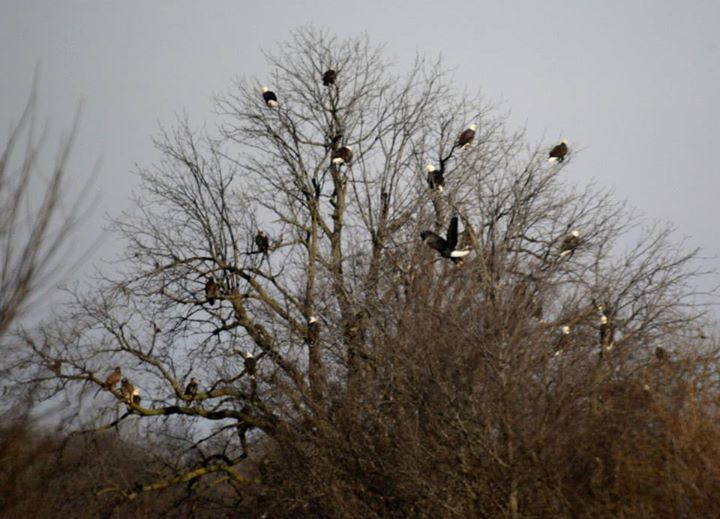

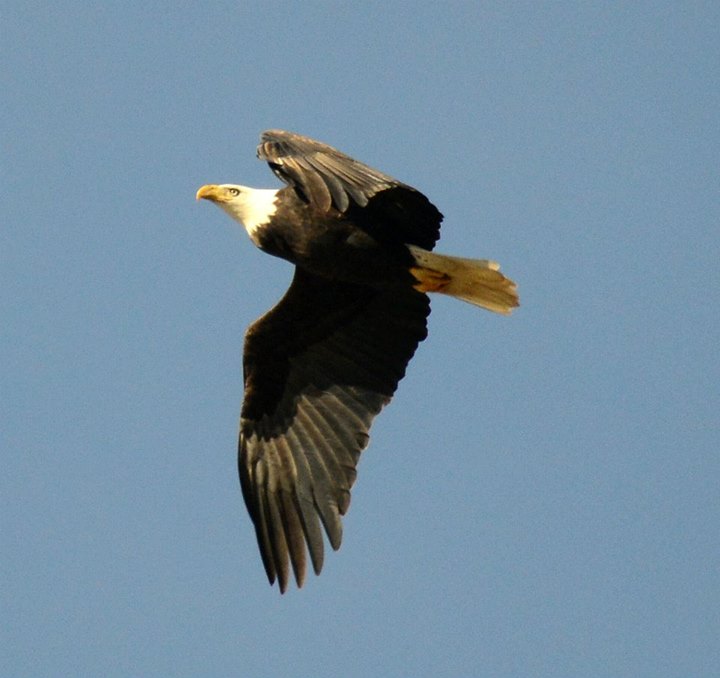

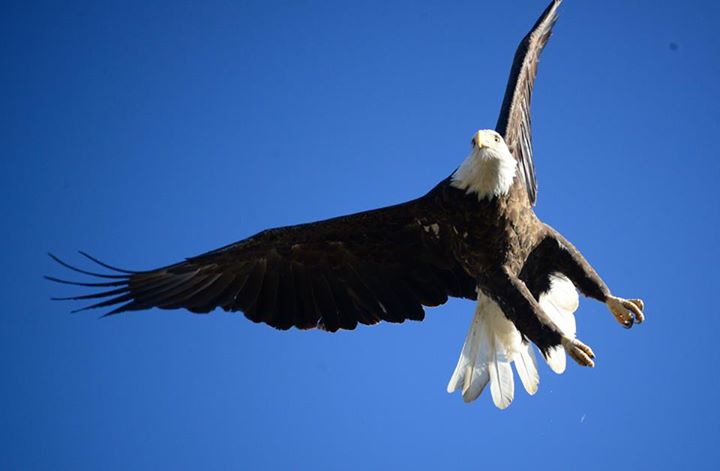
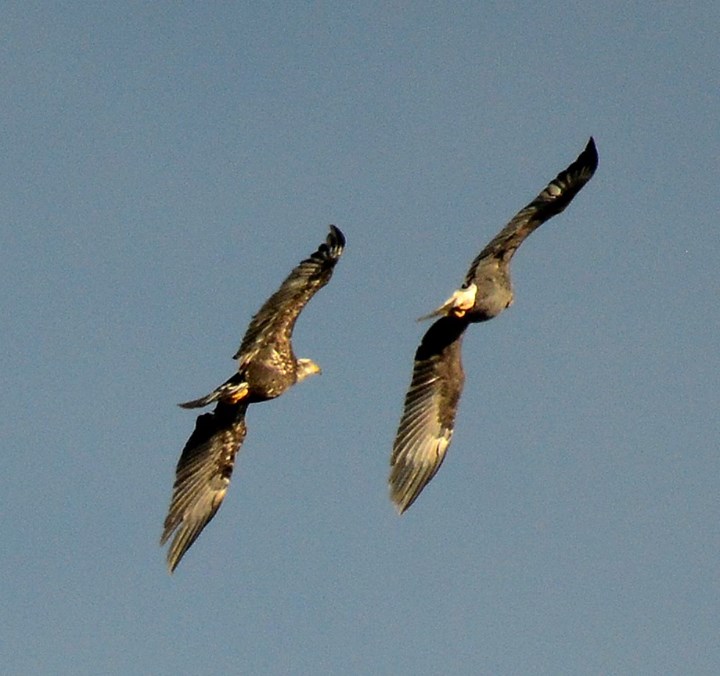

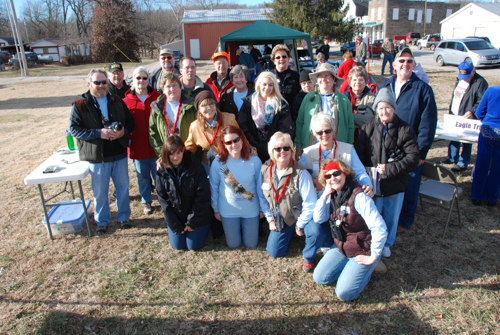
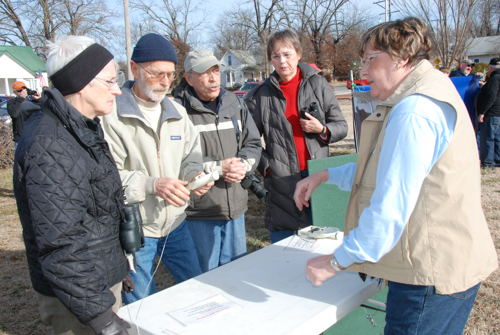
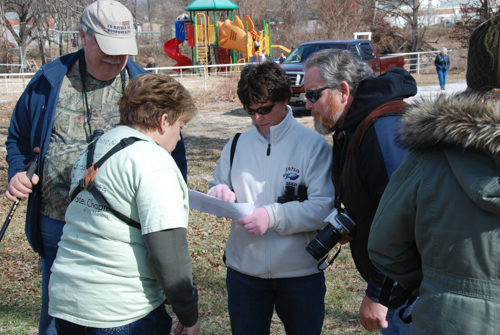


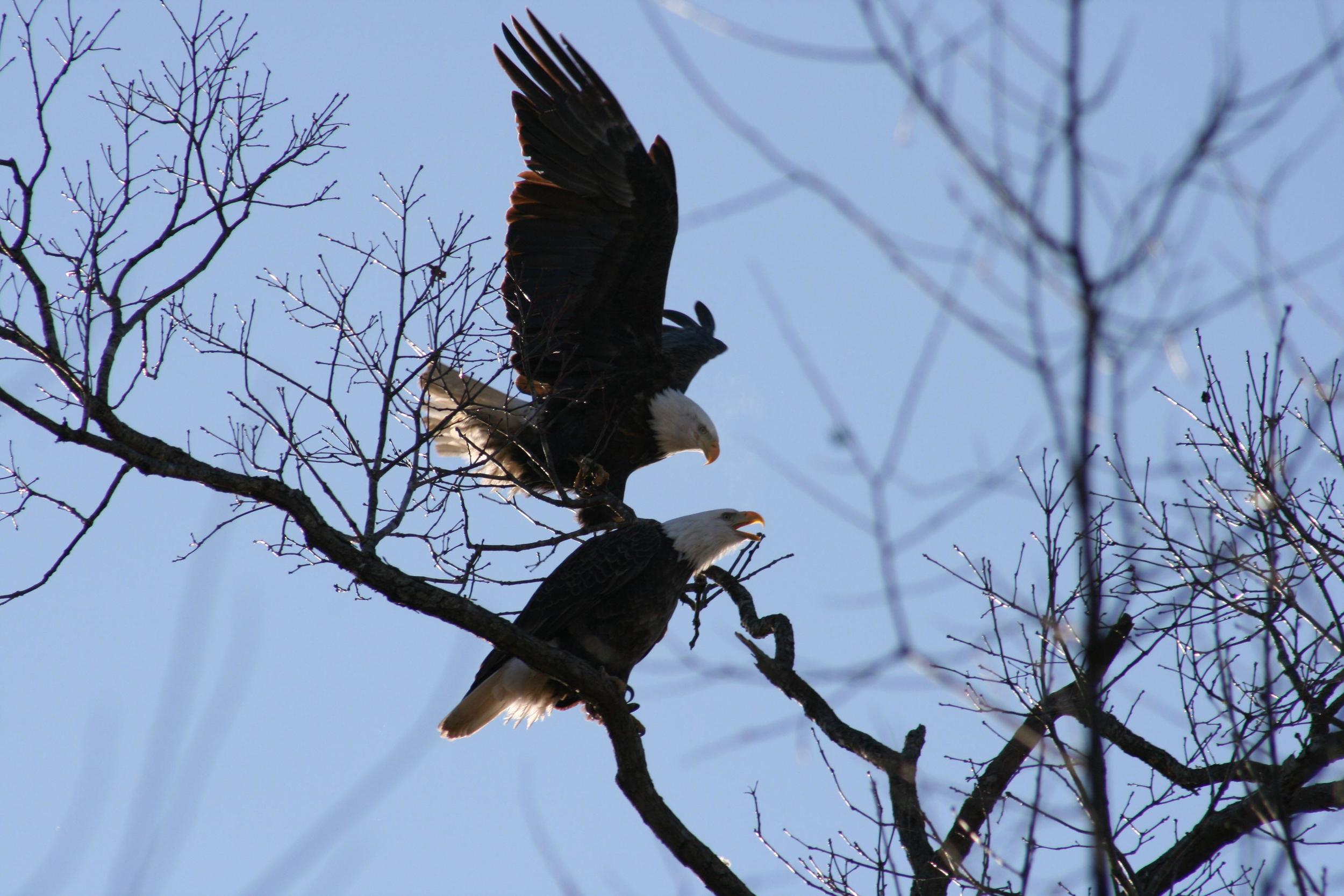



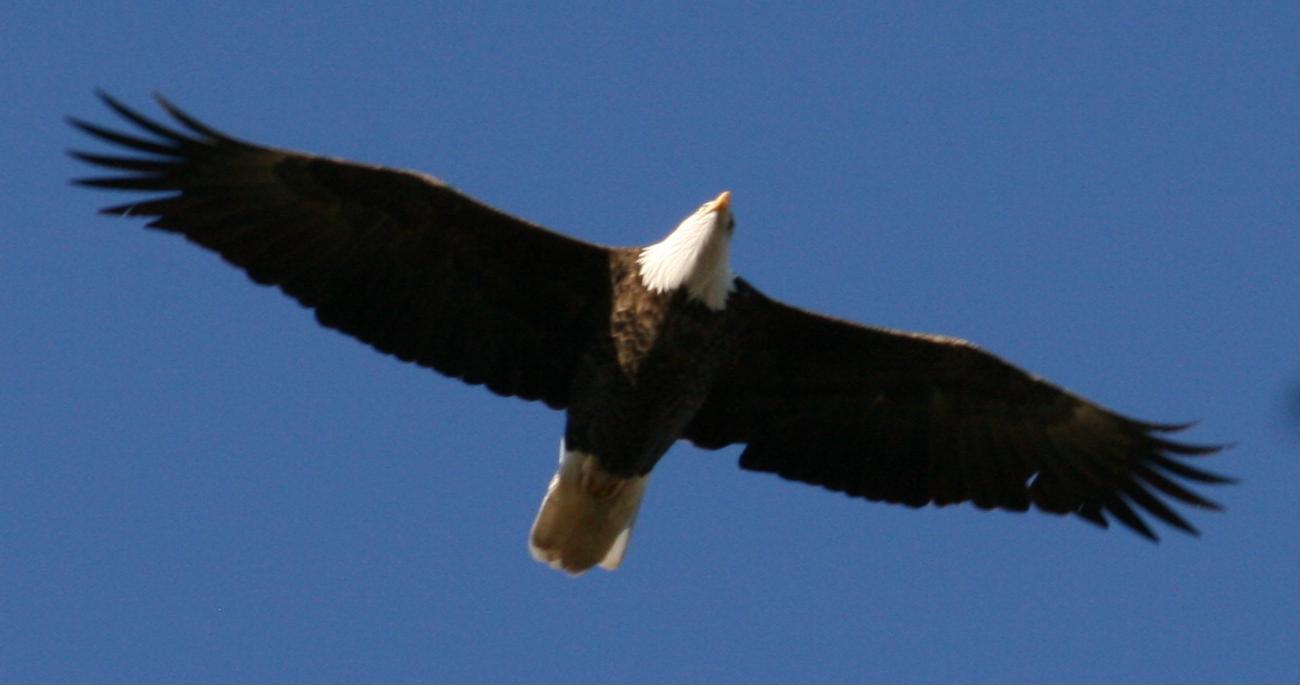

It’s that time of year again — time to view the eagles at Stella. The Chert Glades Master Naturalists will be hosting the Festival of Eagles on Saturday, January 24, 2015 at Stella, Missouri. Activities begin at 10:00 a.m. and go until 3:00 p.m. There will be scopes set up for getting up close and personal views of the eagles who visit Stella every year.
Representatives from the Missouri Department of Conservation and Missouri Master Naturalists will be available for answering questions. There will be a life-sized eagle nest replica, a life-sized eagle wingspread to compare your “wing span” to that of an eagle, face painting, and more. Volunteers will be scouting the area for good viewing opportunities and maps will be available to help you get the best views. Every year the town of Stella has some goodies available for those who visit. There will be hot coffee, hot cocoa, and baked goodies available at the Methodist Church.
For directions to Stella, you can check mapquest or google maps. Here are simplified directions: from Joplin, take I 49 south to Neosho, exit 24 (US 60). Turn left. Go 1.3 miles. Turn righ on I 49 BUS/MO 59/US 71 BUS S. Go 1.3 miles. Turn left on Lyon Dr. Go 1.5 miles. Turn right on Doniphan, go .8 miles. The road will curve left and become Hwy. D. Go 10.6 miles. Turn left onto Hwy. A. Go .8 miles and you will be in Stella. The activities will be located at the city park on the corner of Carter & Ozark streets.
So, come join us for a day of fun in the great outdoors. Dress for the weather, bring your camera and binoculars, if you have them, but mostly just come to enjoy the day. It’s a great opportunity to spend time with your family, learning about one of the great successes of conservation.
In winter, Missouri is a leading migratory stop for Bald Eagles, and Stella is a great place to see them!
Bald Eagle recovery is a spectacular conservation success story!
- 1782 – Adopted as national symbol; 100,000 nests (est)
- 1800’s(early) – Nesting eagles common in Missouri
- 1900 – Numbers declining; eagles shot on sight to protect livestock; no Missouri nests
- 1940 – In danger of extinction; Bald Eagle Protection Act makes harming, possessing or harassing illegal
- 1962 – U.S. nesting pairs dwindle to about 400; Silent Spring(Rachel Carson) is published linking the pesticide DDT to thinning eggs that break during incubation or otherwise fail to hatch
- 1972 – DDT banned
- 1978 – Listed as “endangered” under the Endangered Species Act(ESA)
- 1983 – First report of re-nesting in Missouri
- 1995 – Status upgraded to “threatened” (ESA)
- 2007 – Bald Eagles completely de-listed (ESA)
- 2007-present – More than 2000 Bald Eagles winter in Missouri with 200-300 nesting pairs!
Photography: Kevin Mouser, Ken Middick, Katharine Spigarelli, Becky Wylie
Eagle facts: Val Frankoski
- See more at: http://chertglades.org/?p=2012#sthash.0RqA0N1a.dpuf
